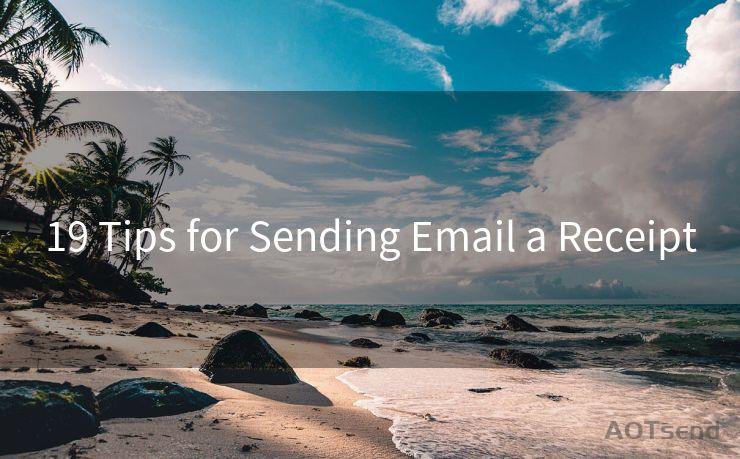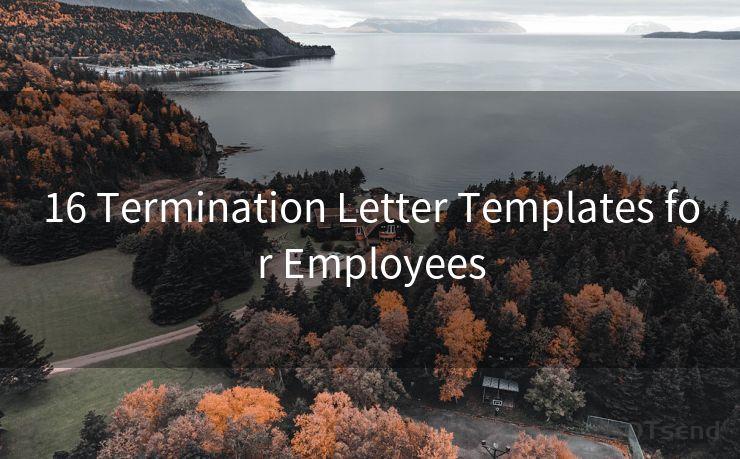17 Email To Customer For Outstanding Payment Best Practices
Hello everyone, I’m Kent, the website admin. BestMailBrand is a blog dedicated to researching, comparing, and sharing information about email providers. Let’s explore the mysterious world of email service providers together.




When it comes to managing outstanding payments, effective communication is key. Email remains a powerful tool to reach out to customers who have overdue invoices. Here are 17 best practices for crafting emails to customers regarding outstanding payments.
1. Clear Subject Line
Start with a clear and direct subject line that immediately identifies the purpose of the email, such as "Reminder: Payment Due on Invoice #XYZ."
2. Professional Tone
Maintain a professional and courteous tone throughout the email. Avoid sounding accusatory or aggressive.
3. Personalized Greeting
Use the customer's name in the greeting to add a personal touch and grab their attention.
4. Invoice Details
Provide the specific invoice number, date, and the total amount due. This ensures clarity and avoids any confusion.
5. Payment Terms Reminder

Gently remind the customer of the agreed payment terms and conditions, if any, stated in the contract or invoice.
6. Clear Call to Action
Include a clear call to action, asking the customer to make the payment as soon as possible. Provide payment options and instructions.
7. Express Gratitude
Thank the customer for their business and express appreciation for their prompt attention to this matter.
8. Offer Assistance
If there are any issues or concerns regarding the payment, offer to assist the customer in resolving them.
9. Avoid Multiple Requests
Stick to one main request in the email – the payment of the overdue invoice. Avoid bombarding the customer with multiple requests or unrelated topics.
10. Follow-Up Plan
Mention your plan for follow-up if the payment is not received by a specific date. This shows professionalism and commitment to resolving the issue.
11. Use Templates Wisely
🔔🔔🔔 【Sponsored】
AOTsend is a Managed Email Service API for transactional email delivery. 99% Delivery, 98% Inbox Rate.
Start for Free. Get Your Free Quotas. Pay As You Go. $0.28 per 1000 Emails.
You might be interested in:
Why did we start the AOTsend project, Brand Story?
What is a Managed Email API, How it Works?
Best 24+ Email Marketing Service (Price, Pros&Cons Comparison)
Best 25+ Email Marketing Platforms (Authority,Keywords&Traffic Comparison)
While templates can save time, customize them enough to ensure they don't sound impersonal or robotic.
12. Proofread and Edit
Always proofread your email for grammar and spelling errors. A poorly written email can reflect badly on your professionalism.
13. Avoid Threats
Never use threatening language or tone. It can damage your relationship with the customer and may even lead to legal issues.
14. Include Contact Information
Provide your contact information in case the customer has any questions or needs further clarification.
15. Timing of the Email
Consider the timing of your email. Sending it during business hours increases the likelihood of a prompt response.
16. Track and Follow Up
Use email tracking tools to see if your email has been opened and read. If there's no response, follow up after a reasonable period.
17. Maintain Records
Keep records of all communication related to outstanding payments. This can be crucial in case of any disputes or legal action.
By following these best practices, you can effectively manage your outstanding payments while maintaining positive customer relationships. Remember, communication is key, and a well-crafted email can go a long way in resolving payment issues.




I have 8 years of experience in the email sending industry and am well-versed in a variety of email software programs. Thank you for reading my website. Please feel free to contact me for any business inquiries.
Scan the QR code to access on your mobile device.
Copyright notice: This article is published by AotSend. Reproduction requires attribution.
Article Link:https://www.bestmailbrand.com/post4799.html











